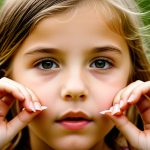Understanding Seasonal Affective Disorder and Winter Depression
Seasonal Affective Disorder (SAD) is a specific type of depression tied to seasonal changes, especially during the winter months. People experiencing winter depression often report symptoms of SAD including persistent low mood, fatigue, irritability, and reduced interest in usual activities. These symptoms typically emerge as daylight hours shorten and can significantly impact daily functioning.
Winter’s reduced natural light disrupts the body’s internal clock, or circadian rhythms, which regulate sleep and mood. This disruption can lead to imbalances in key brain chemicals like serotonin and melatonin, which play roles in mood regulation and energy levels. Understanding these physiological changes helps explain why symptoms of SAD intensify as the days grow darker.
Also to see : How behavioral therapy helps overweight teens overcome emotional eating: an insightful exploration
Prevalence of Seasonal Affective Disorder varies, but it is estimated that about 5% of the population in northern latitudes experience winter depression each year, making it a relatively common condition. Those at higher risk include women, individuals with a family history of depression, and people living far from the equator where winter daylight is minimal.
By recognizing typical symptoms of SAD and understanding how winter influences mental health, individuals can seek targeted treatments and support to ease winter depression effectively.
Also to see : Exploring the link between high-altitude life and chronic obstructive pulmonary disease: a comprehensive analysis
Light Therapy: What It Is and How It Works
Light therapy is a widely recognized treatment method specifically designed for Seasonal Affective Disorder. It involves exposure to a bright, artificial light that mimics natural sunlight, aiming to counteract the effects of the reduced daylight during winter months. The mechanism of light therapy centers on resetting disrupted circadian rhythms, which are often disturbed in individuals experiencing winter depression.
Exposure to this intense light influences the brain’s production of melatonin and serotonin, two crucial chemicals involved in regulating mood and sleep cycles. By regulating these neurotransmitters, light therapy helps restore balance and alleviate symptoms of SAD. Clinical recommendations suggest sitting near a light therapy box providing 10,000 lux for about 20-30 minutes each morning. The timing and intensity are tailored to best replicate natural light conditions, helping the internal clock realign appropriately.
Understanding how light therapy works is essential because it provides a non-pharmacological option for treating SAD with minimal side effects. Many patients experience notable improvements in mood and energy levels within a few days to weeks of consistent use. As a mechanism, light therapy directly addresses the root disruption caused by winter’s diminished sunlight, making it a cornerstone in treating winter depression effectively.
Light Therapy: What It Is and How It Works
Light therapy is a widely recognized treatment for Seasonal Affective Disorder and winter depression. It involves exposure to bright artificial light that mimics natural sunlight, aiming to compensate for the decreased daylight during winter. This treatment primarily targets the disrupted circadian rhythms caused by limited sunlight, which contributes to symptoms of SAD.
The mechanism of light therapy hinges on its ability to influence the brain’s regulation of melatonin and serotonin—hormones critical for mood and sleep. By sitting near a specialized light therapy lamp emitting 10,000 lux for about 20 to 30 minutes each morning, individuals can reset their internal clocks, improving sleep patterns and elevating mood. This consistent exposure helps realign biological processes impacted by reduced daylight.
Clinical recommendations for treating SAD with light therapy generally emphasize regularity. Morning sessions are most effective to simulate natural dawn, resynchronizing circadian rhythms and reducing winter depression symptoms. The therapy is non-invasive and can be used alongside other treatments such as counseling or medication. Proper use of light therapy supports a natural, physiological approach to balancing mood swings common with seasonal changes, making it a key therapeutic option for those struggling with SAD.
Effectiveness of Light Therapy for SAD
Light therapy’s effectiveness in treating Seasonal Affective Disorder (SAD) is well-supported by numerous clinical studies. Research consistently shows that many individuals experience noticeable improvements in mood and energy within just a few days to a few weeks of regular light therapy use. Typically, symptom reductions include less fatigue, enhanced motivation, and improved overall mood, directly addressing the core symptoms of SAD.
Comparatively, light therapy often matches or surpasses antidepressant medications in efficacy for mild to moderate winter depression, while offering fewer side effects. This makes it a highly valued first-line treatment. Studies also indicate combining light therapy with other therapies, like cognitive behavioral therapy, can yield even greater benefits, especially in severe cases. However, effectiveness can depend on adherence to proper timing, duration, and intensity of light exposure.
Importantly, clinical trials emphasize the need for daily sessions of around 20-30 minutes at 10,000 lux, ideally in the morning. This regimen aligns with the mechanism of light therapy that resets circadian rhythms and balances mood-regulating chemicals. For those wondering, the rapid onset of symptom relief demonstrates why light therapy is increasingly recommended for treating SAD and winter depression, offering an accessible, non-invasive, and effective solution.
Understanding Seasonal Affective Disorder and Winter Depression
Symptoms of SAD commonly include persistent sadness, low energy, increased sleep, cravings for carbohydrates, and social withdrawal during winter months. Recognizing these signs early is crucial for timely intervention. Individuals may also experience difficulty concentrating and feelings of hopelessness, which amplify the impact of winter depression on daily life.
The winter season affects mood primarily through reduced exposure to natural sunlight, which disrupts the body’s internal clock. This leads to lowered serotonin levels—a neurotransmitter essential for mood regulation—and increased melatonin production, causing lethargy and sleepiness. These biological shifts underpin why many suffer from Seasonal Affective Disorder as daylight diminishes.
Research shows that the prevalence of Seasonal Affective Disorder is notably higher in populations living further from the equator where winter days are shortest. Women are approximately four times more likely than men to experience SAD, and family history further raises risk. Understanding these risk factors directs focus toward vulnerable groups who may benefit most from awareness and preventive measures.
Supporting Wellbeing: Extra Tips for Managing SAD During Winter
Managing SAD effectively involves more than just using light therapy; incorporating complementary strategies boosts overall winter mental health. Establishing a consistent daily routine helps regulate circadian rhythms naturally. Going outdoors during daylight hours, even on cloudy days, adds valuable natural light exposure, enhancing mood alongside light therapy.
Regular physical exercise is another proven way to mitigate winter depression symptoms. Exercise releases endorphins, improves energy, and supports better sleep, all crucial for managing symptoms of SAD. Even moderate activities like walking can make a significant difference.
Social support also plays a vital role. Staying connected with friends or support groups counters feelings of isolation common in winter depression. Sharing experiences and encouragement helps maintain motivation for treatment adherence.
Balancing light therapy with these lifestyle habits addresses winter depression more comprehensively. When symptoms persist or worsen despite these efforts, seeking professional mental health support is advisable. Therapists may recommend counseling, cognitive behavioral therapy, or medication tailored to individual needs.
By integrating these complementary strategies, individuals can enhance the effectiveness of light therapy and promote resilient mood regulation throughout winter. This multifaceted approach fosters both immediate relief and long-term wellbeing for those coping with Seasonal Affective Disorder.
Understanding Seasonal Affective Disorder and Winter Depression
Symptoms of SAD during winter include persistent low mood, fatigue, social withdrawal, and increased sleep—each signaling the onset of winter depression. These symptoms reflect the body’s response to diminished sunlight, triggering changes in circadian rhythms that affect hormone levels tied to mood regulation.
But how exactly does winter impact mental health? Reduced daylight decreases serotonin production, a key neurotransmitter influencing happiness and energy. Concurrently, melatonin levels rise, promoting sleepiness and lethargy. This hormonal imbalance is why many experience the hallmark symptoms of SAD as daylight hours shrink.
Regarding prevalence, about 5% of people in northern regions report winter depression annually. Women are disproportionately affected, with rates significantly higher than men. Additional risk factors for Seasonal Affective Disorder include family history of depression and living at high latitudes where winter days are shortest.
Recognizing these risk factors improves early identification and intervention. Understanding the specific symptoms of SAD helps distinguish it from other mood disorders, enabling timely treatment. Thus, increased awareness of how winter impacts mood and knowing who is most vulnerable are vital steps toward managing Seasonal Affective Disorder effectively.






